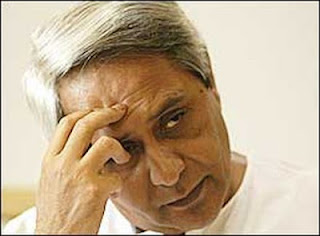The project is unique of its kind in the country where a
Shrine Board has taken up issues of environment on a massive scale
Tata Steel has
come forward to support the plantation drive in and around the hill shrine
More than
half-million fruit bearing tress are to be planted over a period of five years
under the project
TTDB has already taken a number of such initiatives in the
past to improve the green cover and to protect the environment of the area
Recently it
announced to introduce Solar lighting system in the Hill Shrine with assistance
from the Central Government.

In continuation of its social initiatives, The Tara Tarini
Development Board (TTDB) started a massive afforestation drive in collaboration
with the Tata Steel, in and around the holy Tara Tarini Hill Shrine near
Berhampur city in Odisha. The Tata Steel has come forward to support the
afforestation programme in the hill shrine and has offered to plant around
half-million fruit bearing tress over a period of five years around the hill
shrine area besides taking care of the trees. This initiative has been welcomed
by the people for being a first of its kind initiative taken by a Shrine Board
in collaboration with a private sector company.
The Chairman TTDB and Revenue Divisional Commissioner (RDC)
Southern Division Odisha Shri LN Nayak and Tata Steel Odisha Chief Resident
Executive Shri Sushanta Kumar Mishra jointly started this programme on 17 July
by planting trees in the foothill area of the Shrine. Tata Steel Gopalpur plant
heads Shri AK Mohapatra and Shri SK Singh, Senior Manager Tata Steel Shri SS
Routray, Secretary TTDB Shri Pramod Kumar Panda, office bearers of Tara Tarini
Development Board and senior officials of Government of Odisha and district
administration were also present on this occasion.
Tara Tarini Development Board (TTDB) has taken a number of
such initiatives in recent times to improve the green cover and protect the
environment of the holy shrine. Recently introduction of Solar lighting system
in the entire Hill Shrine area has been taken up by TTDB with assistance from
the Central Government.
Following the afforestation programme, a meeting of the
office bearers of the Development Board was held under the Chairmanship of Shri
LN Nayak, Chairman TTDB. On this occasion, Member of Parliament (Rajya Sabha)
Smt. Renubala Pradhan announced to contribute required fund from her MPLAD to
construct a rest-shed to accommodate large number of visitors and a market
complex on the Hilltop. To protect the Hill top area, it was also decided to
construct embankments on both the north and south side of the Hilltop. The
Rural Development Department, Government of Odisha, agreed to prepare the
master plan for it. To protect the natural beauty of the Hilltop, architect
Prabir Dash gave a number of proposals on this occasion. Similarly, Shri Durga
Prasad tabled a master plan to execute the various developmental projects
proposed by the TTDB, and it was sent to the Technical Committee of TTDB to
further examine the master plan.
Tara Tarini to have more green cover
TTDB, Tata Steel take
up a project
A massive plantation drive has been taken up jointly by the
Tara Tarini Development Board (TTDB) and Tata Steel at the hill shrine to
increase the green cover on the hill and its adjoining areas.
According to TTDB authorities, it is an effort to create
awareness regarding importance of plantation and protection of vegetation cover
in the minds of devotees who throng the hill shrine. TTDB secretary Pramod
Panda thanked the Tata Steel authorities for their assistance towards
enhancement of environment of the hill shrine.
The plantation project will continue for five years. During
the period, saplings will be planted in different locations in a phased manner.
All the saplings will be provided by the company which will
also assist for their maintenance and safekeeping, according to Mr Panda.
Initially, 5,000 saplings will be planted during the current
rainy season. Saplings of fruit-bearing plants, flowering plants, and medicinal
plants will be planted under the project.
These will be of great help for sustenance of wild animals
like varieties of monkeys living in the area. Initially these plants are being
planted by the side of all roads leading to the hill shrine and to the hill
top.................................................. (Source: The Hindu)
The Tara Tarini Development Board (TTDB) has started a massive
afforestation drive in collaboration with the Tata Steel in and around the holy
Tara Tarini hill shrine near Berhampur city. The Tata Steel has offered to
plant around half a million fruit-bearing tress over a period of five years
around the temple area besides taking care of the trees.
TTDB chairman and RDC (Southern) LN Nayak and Tata Steel Odisha Chief
Resident Executive Sushanta Kumar Mishra jointly started the programme on July
17 by planting saplings in the foothill area of the shrine. ................................. (Source: The Pioneer)
TTDB and Tata Steel initiate massive plantation drive at
Tara Tarini Hill Shrine
Report by OD bureau; Berhampur: In continuation of
its social initiatives, The Tara Tarini Development Board (TTDB) started a
massive afforestation drive in collaboration with the Tata Steel, in and around
the holy Tara Tarini Hill Shrine near Berhampur city in Odisha. .................(Source: Odishadiary.com)
TTDB and Tata Steel initiate massive plantation
In continuation of its social initiatives, The Tara Tarini
Development Board (TTDB) started a massive afforestation drive in collaboration
with the Tata Steel, in and around the holy Tara Tarini Hill Shrine near
Berhampur city in Odisha.
The Tata Steel has come forward to support the afforestation
programme in the hill shrine and has offered to plant around half-million fruit
bearing tress over a period of five years around the hill shrine area besides
taking care of the trees...................................... (Source: Odishabartha)











.jpg)















